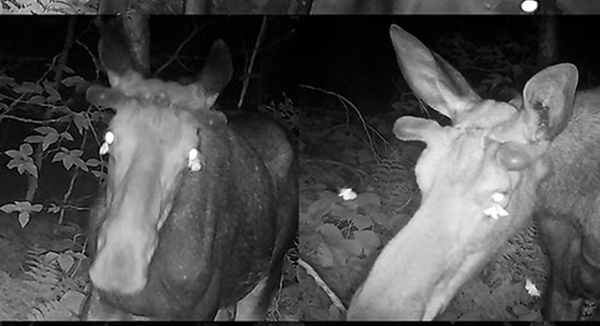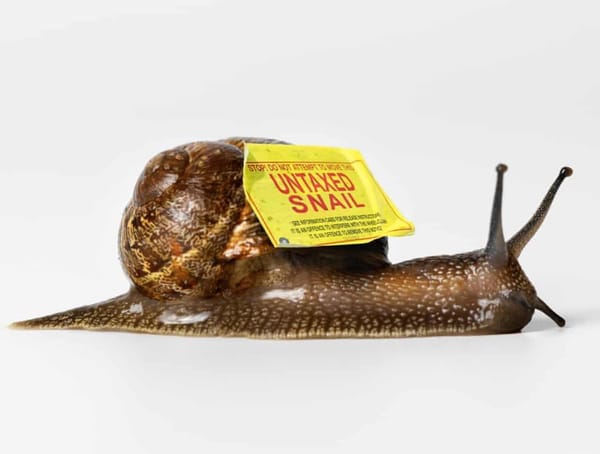Residency training was created by a doctor addicted to cocaine

From National Library of Medicine: "The structure of modern residency programs in North America originated at Johns Hopkins Hospital during the last decade of the 19th century, under the aegis and influence of William Stewart Halsted. Halsted was a surgical innovator who greatly shaped surgical practice in the 20th century. As a young surgeon in New York, Halsted was a highly skilled, bold, fast and daring surgeon who was charismatic and sociable and excelled at teaching medical students. In Baltimore, he was a slow and meticulous surgeon who was a recluse and who avoided teaching medical students when possible. Between these 2 periods, Halsted and some colleagues accidentally became addicted to cocaine, when in late 1884 they, being aware of a new report that cocaine could be used as local anesthesia, experimented upon themselves."
A group of chimpanzees have learned how to communicate over long distances

From La Brujula Verde: "A team of researchers documented a previously unseen behavior in a group of wild chimpanzees in the forests of Guinea-Bissau, Africa: the deliberate use of stones to produce sounds, which they interpret as a sophisticated form of long-distance communication. The team, led by biologist Sem van Loon, discovered that adult male chimpanzees repeatedly struck stones against tree trunks, leaving behind piles of these rocks at the base. Van Loon explains that this behavior, which she calls “stone-assisted drumming,” is a variant of a previously known practice in these primates. But there are differences, because while traditional drumming is usually preceded by silence and then bursts into loud sounds, in this new pattern the chimpanzees first emit loud vocalizations before striking the stones against the trees again."
She and her husband proved that diseases can be airborne but they were ignored

From Scientific American: "Physician and self-taught epidemiologist Mildred Weeks Wells and her husband, sanitary engineer William Firth Wells, proved that infectious pathogens could spread through the air over long distances. But the two had a reputation as outsiders, and they failed to convince the scientific establishment, who ignored their findings for decades. What the pair figured out could have saved many lives from tuberculosis, SARS, COVID and other airborne diseases. At the time, the idea that it could spread through the air was really looked at as being just an obsolete superstition. Public health experts would say a patient's breath is basically harmless. But the epidemiology looked like these germs were airborne, which was against the consensus at the time. So the contributions of Wells and her husband were all but erased from history."
Hi everyone! Mathew Ingram here. I am able to continue writing this newsletter in part because of your financial help and support, which you can do either through my Patreon or by upgrading your subscription to a monthly contribution. I enjoy gathering all of these links and sharing them with you, but it does take time, and your support makes it possible for me to do that. I also write a weekly newsletter of technology analysis called The Torment Nexus.
Identical twins wouldn't say who was the father so she legally has two dads

From Now I Know: "The mother said she had relations with the man just once. She has a nine-year-old daughter as a result and began court proceedings in 2017, seeking child support. The man she believed she had slept with denied having ever met her, and the court ordered the DNA test. It came back a 99.9% match, which normally would be more than enough to establish paternity. But in this case, the man had a twin brother and asserted that his twin, and not he, was the father. The two men refused to admit which one was the dad. But that didn’t fly with Judge Filipe Luis Peruca, the arbiter assigned to the case. Judge Peruca wrote in his decision that “It’s evident that the defendants, from adolescence, took advantage — and continue to take advantage! — of the fact that they are identical twins." So Judge Peruca decided to hold both twins accountable."
A tabby cat named Sanjuro is the lord of a Japanese castle

From Wikipedia: "During the 2018 Japan floods, a three-year old orange and white male cat living in the city to go missing on July 14. He was found at Takahashi Castle in Okayama, where he was adopted by a caretaker. The cat was friendly and chose to remain in the castle grounds, choosing to sleep in the open despite one effort to build a shelter for it. At that time, tourism officials were discussing promoting the story of Sanjuro Tani, a local samurai from the Sengoku period, and the director of the tourism association managing the castle started referring to the cat as Sanjuro. When the castle reopened, the cat became famous for greeting visitors. His presence was spread through social media, and on October 10 he was featured in a local newspaper. Sanjuro was officially given the title of lord of the castle on December 16, 2018. A public ceremony was held in which Sanjuro walked along a red carpet while wearing a hakama."
A giant ice column detaches from a glacier and shoots 200 feet in the air
This guy captures a giant ice column detached from Columbia Glacier and shoots 200 ft into the air 😳 pic.twitter.com/UH2CiBiah0
— Dudes Posting Their W’s (@DudespostingWs) May 28, 2025
Acknowledgements: I find a lot of these links myself, but I also get some from other newsletters that I rely on as "serendipity engines," such as The Morning News from Rosecrans Baldwin and Andrew Womack, Jodi Ettenberg's Curious About Everything, Dan Lewis's Now I Know, Robert Cottrell and Caroline Crampton's The Browser, Clive Thompson's Linkfest, Noah Brier and Colin Nagy's Why Is This Interesting, Maria Popova's The Marginalian, Sheehan Quirke AKA The Cultural Tutor, the Smithsonian magazine, and JSTOR Daily. If you come across something interesting that you think should be included here, please feel free to email me at mathew @ mathewingram dot com



